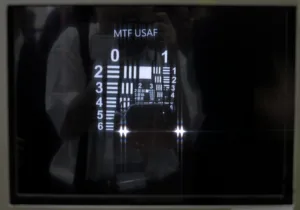I’m intrigued by the way industries are often able to suppress their ‘guilty little secrets’, that is to say, weaknesses that the industry knows about, but that consumers and buyers don’t understand. At Touch Taiwan, ITRI, the Taiwanese government-backed research institute, showed a possible solution to a ‘guilty little secret’ of transparent displays.

Now, transparent displays have a couple of disadvantages. One is that emissive displays such as OLEDs can’t produce black without some special technology. Panasonic, for example, has shown some wonderful transparent TV concepts at CES and IFA over recent years, but they have a switchable ‘single pixel’ LCD behind them to block light when they are used in TV mode and when transparency is not desired.
A second, less well known, problem is optical. Many or most of the applications that you will see have objects close to the display panel, behind it – for example in retail displays, with information overlaid. Now, one reason for this is that keeping the object close means that the light that you need to use to illuminate the object is less diffuse, so less lighting is needed. However the second problem is less obvious in most applications and is related to the optics of the display.
Transparent OLEDs and LCDs have, like regular panels, black matrices around each sub-pixel to help with contrast and colour purity. They also have patterns of transistors and so, when you look through the display, you are looking through a very fine array. The problem is that the apertures are so small that you get some light diffraction which means that the image is distorted or may suffer from undesirable optical artefacts. That is not a problem if the object is close to the display, but when it’s at a distance, it’s a big problem. So, it may not be a big issue for a retail jewellery display case, but suppose that you wanted to put a display where the windscreen is on a self-driving car? Then the viewed objects would be at a distance and diffraction would be (and is) a problem. That’s one of the reasons why almost all the demonstrations you see with transparent displays are this kind of retail display case.
The vertical and horizontal lines from the highlights are caused by diffraction. Image:Meko
Scientists at ITRI have worked to solve this problem and had good examples of what they have been able to achieve. The engineer that we spoke to told us that the approach started from a theoretical concept and used optical modelling software to simulate both the problem and modifications to the pixel design that would significantly reduce the effects of fringing etc. As it turned out, when the group moved from the realm of theory to practice, they found that the models worked well.

This is still a relatively early project, but there is a lot of interest in transparent displays, not just in applications such as retail, but even in TV. The reaction to Panasonic’s demonstrations at CES and IFA were very popular and collected crowds. Eliminating one of the ‘guilty little secrets’ could be very helpful in developing the market for transparent displays. ITRI has developed transistor arrays and have confirmed that the technique uses no more steps than LTPS. ITRI is developing a complete display and expects it to be done by the end of this year.

